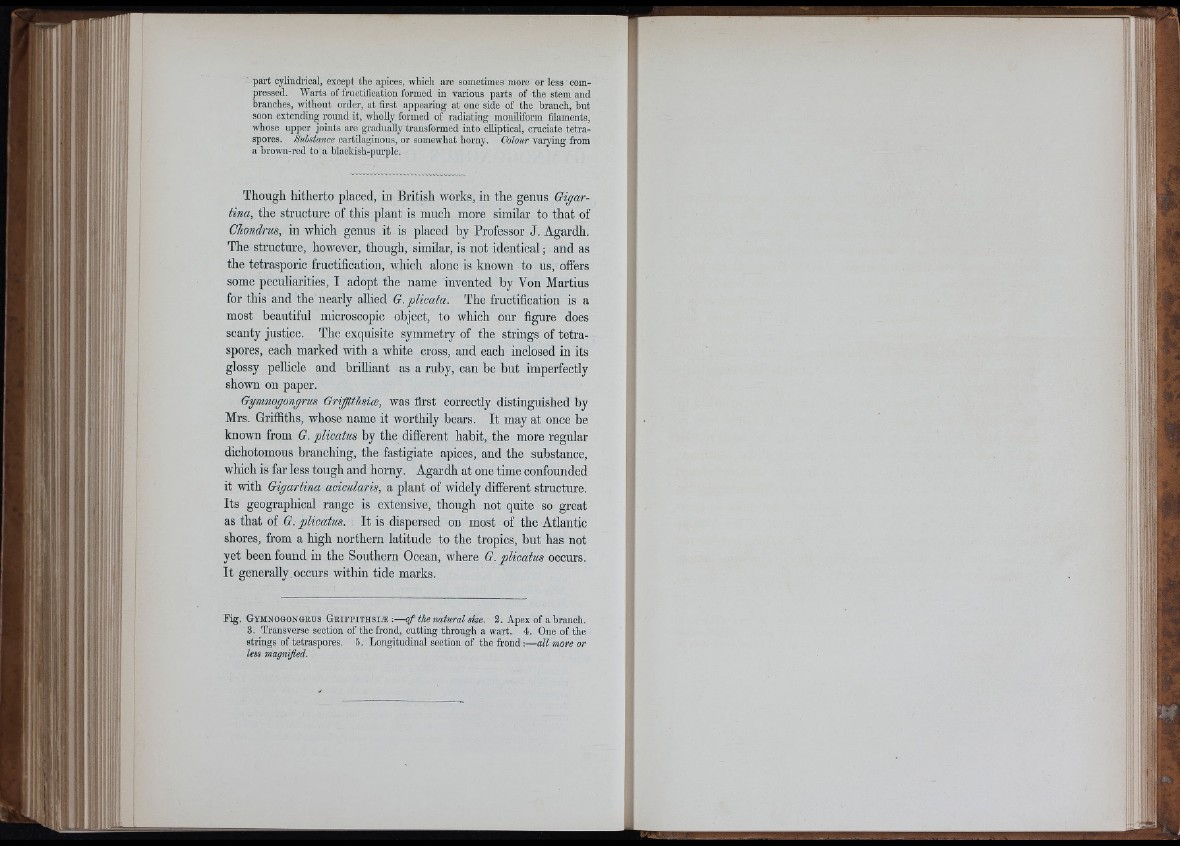
part cylindi-ical, except the apices, which are sometimes more or less compressed.
Warts of fructification formed in various parts of the stem and
branches, without order, at first appearing at one side of the branch, but
soon extending round it, whoUy formed of radiating moniliform filaments,
whose upper joints are gradually transformed into eUiptical, cruciate tetraspores.
Substance cartilaginous, or somewhat horny. Colour varying from
a brown-red to a blackish-purple.
Though hitherto placed, in British works, in the genus Gigartina,
the structure of this plant is much more similar to that of
Chondrus, in which genus it is placed by Professor J. Agardh.
The structure, how^ever, though, similar, is not identical; and as
the tetrasporic fructification, which alone is known to us, offers
some peculiarities, I adopt the name invented by Von Martius
for this and the nearly allied G. plicata. The fructification is a
most beautifid microscopic object, to which our figure does
scanty justice. The exquisite symmetry of the strings of tetraspores,
each marked with a white cross, and each inclosed in its
glossy pellicle and brilliant as a ruby, can be but imperfectly
shown on paper.
Gymnogongrus Griffithsice, was first correctly distinguished by
Mrs. Griffitbs, whose name it worthily bears. It may at once be
known from G. plicatus by the different habit, the more regular
dichotomous branching, the fastigiate apices, and the substance,
which is far less tough and horny. Agardh at one time confounded
it with Gigartina acicularis, a plant of widely different structure.
Its geographical range is extensive, though not quite so great
as that of G. plicatus. It is dispersed on most of the Atlantic
shores, from a high northern latitude to the tropics, but has not
yet been found in the Southern Ocean, where G. plicatus occurs.
It generally occurs within tide marks.
Fig. Gymnogongrus Geif p ith s iæ :— o f the natural size. 3. Apex of a branch.
3. Transverse section of the frond, cutting through a wart. 4. One of the
strings of tetraspores. 5. Longitudinal section of the frond :— all more or
less magnifed.
%
J
Ii; itï
'i: i f